bomb
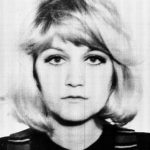 For most of us, taking a fall, of any kind is no fun. Taking a fall off of a one story roof is terrifying, and if we were to fall from a two story building, we might not expect to live through it. For Serbian flight attendant, Vesna Vulovic a two story fall is like stubbing her toe. On January 26, 1972, while she was working on JAT Flight 367, a terrorist bomb exploded on the plane. Vesna found herself in a freefall without a parachute at an altitude of 33,333 feet. Vulovic, who was just 22 years old, and thought she had landed a wonderful career that would allow her to travel to exotic places. Never in a million years did she imagine that her career would end this way.
For most of us, taking a fall, of any kind is no fun. Taking a fall off of a one story roof is terrifying, and if we were to fall from a two story building, we might not expect to live through it. For Serbian flight attendant, Vesna Vulovic a two story fall is like stubbing her toe. On January 26, 1972, while she was working on JAT Flight 367, a terrorist bomb exploded on the plane. Vesna found herself in a freefall without a parachute at an altitude of 33,333 feet. Vulovic, who was just 22 years old, and thought she had landed a wonderful career that would allow her to travel to exotic places. Never in a million years did she imagine that her career would end this way.
Flight 367 was flying over Srbská Kamenice in Czechoslovakia, which is now part of the Czech Republic. She had not been scheduled to be on that flight, but she had been mixed up with another flight attendant who was also named Vesna. I’m sure she wished she had not been as she was falling through the air that awful day in 1972. While falling 33,333 feet, a person has a good bit of time to think about what they wished they had done, or not done. And at 22, I’m sure there were many things she had hoped to accomplish in her lifetime, and now those things could never happen.
The official report of the Czechoslovak investigation commission, which was handed over to the ICAO on May 7, 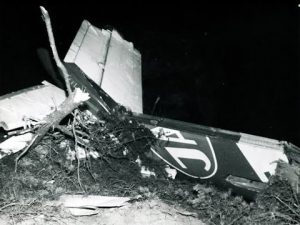 1974, stated that there had been an explosion in the front baggage compartment of the plane. The Czechoslovak secret service, which was leading the investigation, presented parts of an alarm clock ten days after the crash which they claimed came from a bomb. The report concluded that a bomb brought down Flight 367. That morning, an anonymous man called the newspaper Kvällsposten published in Malmö, Sweden, claiming, in broken Swedish, that he was a Croat and member of a nationalist group that placed the bomb on the plane. Shortly after the phone call, the Yugoslav government blamed the Ustaše. According to the official report the explosion tore the McDonnell Douglas DC-9-32 to pieces in mid-air. Vulovic was the only survivor.
1974, stated that there had been an explosion in the front baggage compartment of the plane. The Czechoslovak secret service, which was leading the investigation, presented parts of an alarm clock ten days after the crash which they claimed came from a bomb. The report concluded that a bomb brought down Flight 367. That morning, an anonymous man called the newspaper Kvällsposten published in Malmö, Sweden, claiming, in broken Swedish, that he was a Croat and member of a nationalist group that placed the bomb on the plane. Shortly after the phone call, the Yugoslav government blamed the Ustaše. According to the official report the explosion tore the McDonnell Douglas DC-9-32 to pieces in mid-air. Vulovic was the only survivor.
Vulovic suffered a fractured skull, three broken vertebrae, one of which was crushed completely, and that left her temporarily paralyzed from the waist down, and two broken legs. She was in a coma for 27 days. In an interview, she commented that according to the man who found her, “…I was in the middle part of the plane. I was found with my head down and my colleague on top of me. One part of my body with my leg was in the plane and my head was out of the plane. A catering trolley was pinned against my spine and kept me in the 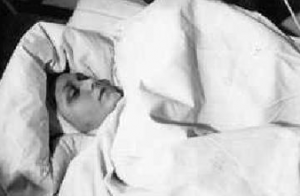 plane. The man who found her said she was lucky. He was in the German Army as a medic during World War II. He knew how to treat trauma. The medic is identified as Bruno Henke. Vulovic continued working for JAT Airways at a desk job following a full recovery from her injuries. She regained the use of her legs and continued to fly sporadically. She claimed she had no fear of flying, which she attributed to her loss of memory of the crash, and she even enjoyed watching movies with plane crashes. She was considered a national heroine throughout the former Yugoslavia and was awarded the Guinness Record title by Paul McCartney at a ceremony in 1985. As to becoming the world record freefall holder, Vesna comments, “I am like a cat, I have had nine lives.”
plane. The man who found her said she was lucky. He was in the German Army as a medic during World War II. He knew how to treat trauma. The medic is identified as Bruno Henke. Vulovic continued working for JAT Airways at a desk job following a full recovery from her injuries. She regained the use of her legs and continued to fly sporadically. She claimed she had no fear of flying, which she attributed to her loss of memory of the crash, and she even enjoyed watching movies with plane crashes. She was considered a national heroine throughout the former Yugoslavia and was awarded the Guinness Record title by Paul McCartney at a ceremony in 1985. As to becoming the world record freefall holder, Vesna comments, “I am like a cat, I have had nine lives.”
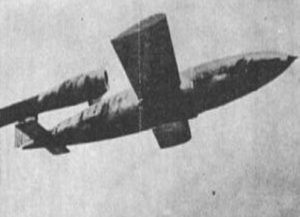
 Every time I research one of the weapons used in war, I am more and more stunned by the hatred that brings the need to destroy one another. During World War II, Hitler continuously created…or rather had his scientists create newer, more powerful, and more devastating bombs. His V-1 missile, also known as the V-1 flying bomb, or in German: Vergeltungswaffe 1, meaning “Vengeance Weapon 1” became known to the Allies as the buzz bomb, or doodlebug. In Germany it was known as Kirschkern, or cherrystone, and as Maikäfer or maybug. It was an early cruise missile, and also the first production aircraft to use a pulsejet for power.
Every time I research one of the weapons used in war, I am more and more stunned by the hatred that brings the need to destroy one another. During World War II, Hitler continuously created…or rather had his scientists create newer, more powerful, and more devastating bombs. His V-1 missile, also known as the V-1 flying bomb, or in German: Vergeltungswaffe 1, meaning “Vengeance Weapon 1” became known to the Allies as the buzz bomb, or doodlebug. In Germany it was known as Kirschkern, or cherrystone, and as Maikäfer or maybug. It was an early cruise missile, and also the first production aircraft to use a pulsejet for power.
The V-1 was developed at Peenemünde Army Research Center by the Nazi German Luftwaffe during World War II. During initial development it was known by the codename “Cherry Stone.” It was first of the so-called “Vengeance weapons” (V-weapons or Vergeltungswaffen) series designed for terror bombing of London. As one of my readers, Greg (sorry, I don’t know his last name) pointed out to me, it was one of the V weapons…the V-3 to be exact that would ultimately cause the death of Joseph Kennedy, but that is a story for another day. The range of the V-1 missile was limited, and so the thousands of V-1 missiles launched into England were fired from launch facilities along the French (Pas-de-Calais) and Dutch coasts. The first V-1 was launched at London on 13 June 1944, one week after, and actually prompted by the successful Allied landings in Europe. At its peak, more than one hundred V-1s a day were fired at south-east England, 9,521 in total, decreasing in number as sites were overrun until October 1944, when the last V-1 site in range of Britain was overrun by Allied forces. After this, the V-1s were directed at the port of Antwerp and other targets in Belgium, with 2,448 V-1s being launched. The attacks stopped only a month before the war in Europe ended, when the last launch site in the Low Countries was overrun on March 29, 1945.
It took a V-1 about 15 minutes to travel from its launch pad in Calais, France to the heart of London…a distance of nearly 95 miles. Nearly 10,000 V-1s were launched from sites in Northern France over an 80 day period beginning in June 1944. Their targets included London, as well as other cities in southern England. At the peak of the bombing, more than 100 rockets were hitting Britain daily. Casualties climbed to 22,000 people, with more than 6,000 of them fatalities. Hitler hoped his new weapons would crush British morale, bringing 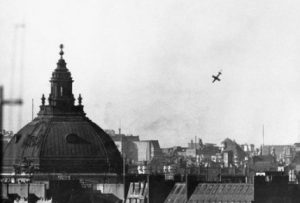
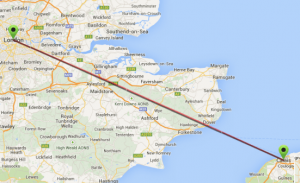 surrender. More V-1s would later be fired from inside Germany itself at Liege and the port of Antwerp. Hitler had underestimated the British, however. The British operated an arrangement of air defenses, including anti-aircraft guns and fighter aircraft, to intercept the bombs before they reached their targets as part of Operation Crossbow, while the launch sites and underground V-1 storage depots were targets of strategic bombings.
surrender. More V-1s would later be fired from inside Germany itself at Liege and the port of Antwerp. Hitler had underestimated the British, however. The British operated an arrangement of air defenses, including anti-aircraft guns and fighter aircraft, to intercept the bombs before they reached their targets as part of Operation Crossbow, while the launch sites and underground V-1 storage depots were targets of strategic bombings.
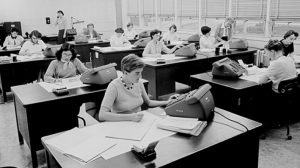 When we think of computers, most of us think of the modern day laptop, or even our smart phones, and when we think of who invented the computer, we think of a man, and that would probably be right, but when NASA thinks of computers, they also have to include the Women of NASA. They were known as “human computers” long before desktop, laptops, or even multi-function calculators existed. Barbara “Barby” Canright joined California’s Jet Propulsion Laboratory in 1939. She was the first female “human computer” and her job was to calculate anything from how many rockets were needed to make a plane airborne to what kind of rocket propellants were needed to propel a spacecraft. She did her calculations by hand, with only a pencil and graph paper. It often took more than a week to complete, and her work commonly filled six to eight notebooks with data and formulas. After the Japanese attack on Pearl Harbor, her work, along with that of her mostly male teammates, took on a new meaning. There was important work to be done to secure the safety of our nation. The army needed to lift a 14,000 pound bomber into the air, and Barby was responsible for determining the thrust-to-weight ratio and comparing the performance of engines under various conditions, so they could make that happen. Due to the amount of work it was going to take to accomplish this task, more “computers” were hired, including three women Melba Nea, Virginia Prettyman and Macie Roberts.
When we think of computers, most of us think of the modern day laptop, or even our smart phones, and when we think of who invented the computer, we think of a man, and that would probably be right, but when NASA thinks of computers, they also have to include the Women of NASA. They were known as “human computers” long before desktop, laptops, or even multi-function calculators existed. Barbara “Barby” Canright joined California’s Jet Propulsion Laboratory in 1939. She was the first female “human computer” and her job was to calculate anything from how many rockets were needed to make a plane airborne to what kind of rocket propellants were needed to propel a spacecraft. She did her calculations by hand, with only a pencil and graph paper. It often took more than a week to complete, and her work commonly filled six to eight notebooks with data and formulas. After the Japanese attack on Pearl Harbor, her work, along with that of her mostly male teammates, took on a new meaning. There was important work to be done to secure the safety of our nation. The army needed to lift a 14,000 pound bomber into the air, and Barby was responsible for determining the thrust-to-weight ratio and comparing the performance of engines under various conditions, so they could make that happen. Due to the amount of work it was going to take to accomplish this task, more “computers” were hired, including three women Melba Nea, Virginia Prettyman and Macie Roberts.
It was a time when women were mostly homemakers, and in fact, often looked at as probably not able to understand complicated things like math, science, and engineering, but times were changing. We were a nation at war, and many of the men were fighting. Not only did the women step up to the plate, but they showed that they could understand the work they did, as well as, if not better than their male counterparts. In fact, they did their work so well, that their calculations would end up charting the course of many ground breaking missions that would carry United States astronauts to the moon and beyond. These women were an elite team of mathematicians, engineers and scientists, who were tasked with turning numbers into meaningful data at what would later become NASA’s Jet Propulsion Laboratory and Langley Research Center. They challenged NASA to let them show what they could do, and when NASA did so, they really shined. It was an eye-opening accomplishment, and one that I’m pretty sure many men thought couldn’t be done.
It’s a funny thing, in my mind, that they were called “human computers” though. I suppose the work they did was computing, but the terminology just seems odd. These days, we talk about someone having the mind of a computer, but we don’t call them a computer. I guess that’s because we have computers, and no one would think of a person in that way. The reality is that, while these women were breaking ground in previously uncharted territory, their services would never really become unnecessary. In fact, one of the earliest human computers still works at Jet Propulsion Laboratory. Sue Finley is 80 now, and NASA’s longest serving female employee. She was originally hired in 1958 to work on trajectory computations for rocket launches, and is now  a software tester and subsystem engineer. She is currently working on NASA’s mission to Jupiter. Her legacy, and that of the other early human computers, is literally written in the stars. What really amazes me is that many people over 70 have no idea how to work a computer, and yet here is this 80 year old woman who is a software tester and subsystem engineer. Amazing!! Totally amazing!!
a software tester and subsystem engineer. She is currently working on NASA’s mission to Jupiter. Her legacy, and that of the other early human computers, is literally written in the stars. What really amazes me is that many people over 70 have no idea how to work a computer, and yet here is this 80 year old woman who is a software tester and subsystem engineer. Amazing!! Totally amazing!!
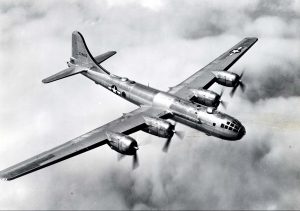 Since my dad was in the Army Air Forces in World War II, the B-17 is a plane that I have researched, watched documentaries and movies about, and toured. The B-17 was called the Flying Fortress, and my dad always said that it was a very safe plane. Nevertheless, as much as I love the B-17 Bomber, there are other war planes that were also stars of World War II. Sometimes, I think that I forget about all those others planes.
Since my dad was in the Army Air Forces in World War II, the B-17 is a plane that I have researched, watched documentaries and movies about, and toured. The B-17 was called the Flying Fortress, and my dad always said that it was a very safe plane. Nevertheless, as much as I love the B-17 Bomber, there are other war planes that were also stars of World War II. Sometimes, I think that I forget about all those others planes.
One of those planes, the B-29 Superfortress actually made its debut flight in Seattle Washington on this day, September 21, 1942. The B-29 was the largest bomber used in World War II, by any nation. The B-29 was the brain child of General Hap Arnold, back in 1939. Arnold worried that a German victory in Europe would mean the United States would have no bases on the eastern side of the Atlantic from which to counterattack. They needed a plane that could travel faster, farther, and higher than anything that was available then. Taking on the challenge, Boeing set out to create such a plane.
The plane they came up with was amazing. It could carry loads that were nearly its own weight and at altitudes  of 30,000 to 40,000 feet. The plane boasted a pilot console in the rear of the plane, capable of running the plane in the event the front pilot was knocked out of commission. It also had the first radar bombing system of any US bomber. While the Superfortress first took flight on September 21, 1942, it would not make its bombing debut until June 5, 1944, in a battle against Bangkok, as the Allies prepared to liberate Burma from the hands of the Japanese. Then a little over a week later, it was used against mainland Japan on June 14, when 60 B-29s based in Chengtu, China were used to bomb an iron and steel works factory on Honshu Island. It wasn’t exactly a successful mission, but it did boost the morale of the Americans.
of 30,000 to 40,000 feet. The plane boasted a pilot console in the rear of the plane, capable of running the plane in the event the front pilot was knocked out of commission. It also had the first radar bombing system of any US bomber. While the Superfortress first took flight on September 21, 1942, it would not make its bombing debut until June 5, 1944, in a battle against Bangkok, as the Allies prepared to liberate Burma from the hands of the Japanese. Then a little over a week later, it was used against mainland Japan on June 14, when 60 B-29s based in Chengtu, China were used to bomb an iron and steel works factory on Honshu Island. It wasn’t exactly a successful mission, but it did boost the morale of the Americans.
The United States recaptured the Marianas Islands in the South Pacific, because they were the perfect location for air bases for the new B-29s to strike mainland Japan on a consistent basis. When the bases were up and 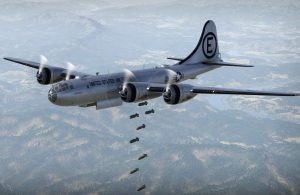 running, they were used to coordinate a series of bombing raids against Tokyo. While the B-29s were capable of precision bombing at high altitudes, they began dropping incendiary devices from a mere 5,000 feet, firebombing the Japanese capital attempting to break the will of the Axis power. One raid, in March 1945, killed more than 80,000 people. But for the Superfortress, the most famous use would happen in August. It was the only plane capable of delivering a 10,000 pound bomb…the atomic bomb. The Enola Gay took off on August 6th and the Bock’s Car took off on August 9th both from the Marianas, and flew into history. Of course, we all hope that such a bomb run would never be necessary again, but if it had been, it was good to know it was available.
running, they were used to coordinate a series of bombing raids against Tokyo. While the B-29s were capable of precision bombing at high altitudes, they began dropping incendiary devices from a mere 5,000 feet, firebombing the Japanese capital attempting to break the will of the Axis power. One raid, in March 1945, killed more than 80,000 people. But for the Superfortress, the most famous use would happen in August. It was the only plane capable of delivering a 10,000 pound bomb…the atomic bomb. The Enola Gay took off on August 6th and the Bock’s Car took off on August 9th both from the Marianas, and flew into history. Of course, we all hope that such a bomb run would never be necessary again, but if it had been, it was good to know it was available.
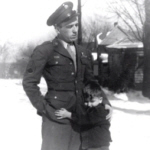 Veteran’s Day is a day about sacrifice and honor, duty and dedication, war and peace, but the day cannot pass for me without thoughts of my dad, and how much I miss him. I know I am not alone in these thoughts, because my mom and sisters also miss him, as well as the rest of our family. Still, no one who has lost a loved one who was a veteran, whether to war or after, can pass this day without thoughts of their loved ones. I think of my Grandpa Byer, my uncles Ted Byer, Cliff Byer, Larry Byer, Jim Wolfe, and my cousin, Larry Wolfe…all gone now, but not lost in war, thankfully. I think of those who, in World War II, couldn’t serve in combat, and so they served at home in the shipyards as builders and Rosie the Riveters, like my Aunt Ruth, Aunt Laura, and Uncle Bill, who couldn’t go because of a hernia and flat feet. And I think of the loved ones…too many to list here…who have fought and returned, and those who continue to fight to secure our nation, and stop terrorist acts all over the globe.
Veteran’s Day is a day about sacrifice and honor, duty and dedication, war and peace, but the day cannot pass for me without thoughts of my dad, and how much I miss him. I know I am not alone in these thoughts, because my mom and sisters also miss him, as well as the rest of our family. Still, no one who has lost a loved one who was a veteran, whether to war or after, can pass this day without thoughts of their loved ones. I think of my Grandpa Byer, my uncles Ted Byer, Cliff Byer, Larry Byer, Jim Wolfe, and my cousin, Larry Wolfe…all gone now, but not lost in war, thankfully. I think of those who, in World War II, couldn’t serve in combat, and so they served at home in the shipyards as builders and Rosie the Riveters, like my Aunt Ruth, Aunt Laura, and Uncle Bill, who couldn’t go because of a hernia and flat feet. And I think of the loved ones…too many to list here…who have fought and returned, and those who continue to fight to secure our nation, and stop terrorist acts all over the globe.
Theirs is a sacrifice beyond measure, a debt we cannot repay. Every day of their service they work, without knowing if they will return to their loved ones, or if this will be the day that a bullet, rocket, or bomb will have their name on it. They go to work knowing fear, as if it was their closest friend, and yet knowing that it is no friend at all. They have to bite back that fear and do their job…because it is needed…they are needed…because without them we are a nation unprotected. Most of us go to bed at night, secure in what the next day will bring, because we live in a nation where freedom belongs to everyone. Nevertheless, we must remember that it is not free. Over the years, our nation has lost so many young people to war. They were really our hope for the future. They were people full of promise. People with plans and dreams…all gone now.
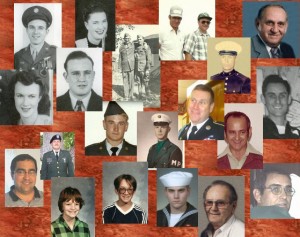 War is a horrible thing, and none of us really want to engage in it. Still, evil exists out there, and it does its very best to reek havoc upon the world. If we do nothing, many innocent people will die. And so God created soldiers. He knew that they would have to be people of honor and dedication, with a strong sense of duty and love for their fellow man. They would have to be people of courage and bravery…able to bite back the fear that dwells all around them. God knew the kind of people they would have to be…Heroes. And that is what every veteran is, was, and always will be…a hero. Today is Veteran’s Day. It is a day to honor those who have given so much to keep us free. Thank you all for your great service. God bless you…everyone of you.
War is a horrible thing, and none of us really want to engage in it. Still, evil exists out there, and it does its very best to reek havoc upon the world. If we do nothing, many innocent people will die. And so God created soldiers. He knew that they would have to be people of honor and dedication, with a strong sense of duty and love for their fellow man. They would have to be people of courage and bravery…able to bite back the fear that dwells all around them. God knew the kind of people they would have to be…Heroes. And that is what every veteran is, was, and always will be…a hero. Today is Veteran’s Day. It is a day to honor those who have given so much to keep us free. Thank you all for your great service. God bless you…everyone of you.
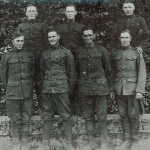 When men go off to war, their buddies become more than just people they serve with. They are family, and more importantly, they are a life line. These men, often barely more than boys, have to count of their fellow soldiers to have their back…in the deepest sense of the word. If the platoon is attacked, it is going to be the ability of the men in the platoon to act at a moments notice that will often decide their fate. Of course, no one is going to be able to move fast enough to get away from a bomb that has been dropped in most cases. There just isn’t time, but if everyone is alert, many dangers can be seen in time to warn the rest of the platoon. The further back in history the war is, the more the men had to depend on each other to stay alive, because modern equipment has helped to track the approaching enemy these days, but back then it wasn’t available.
When men go off to war, their buddies become more than just people they serve with. They are family, and more importantly, they are a life line. These men, often barely more than boys, have to count of their fellow soldiers to have their back…in the deepest sense of the word. If the platoon is attacked, it is going to be the ability of the men in the platoon to act at a moments notice that will often decide their fate. Of course, no one is going to be able to move fast enough to get away from a bomb that has been dropped in most cases. There just isn’t time, but if everyone is alert, many dangers can be seen in time to warn the rest of the platoon. The further back in history the war is, the more the men had to depend on each other to stay alive, because modern equipment has helped to track the approaching enemy these days, but back then it wasn’t available.
My grandpa served in World War I, and while he was a cook and not a fighting soldier, the danger was just as real for him as it was for any other soldier. You can’t be in a war zone, and not be in danger, and quite possibly he had to depend on his fellow soldiers more than someone who was in a fighting position, because he didn’t carry a gun on a regular basis. An attack on the camp would leave these men more vulnerable than men who regularly carry a gun. I’m quite sure that Grandpa and his crew had guns assigned to them, they still didn’t use them as much as other men, as so were not as used to them. They had to know that their platoon members were going to have their back…and they did.
Many men felt such a close tie to their fellow soldiers, that life long friendships were built. 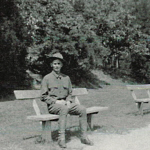 Their comrades were never to be forgotten…whether they made it through the war or not. In fact, often it was those men who did not come home, who were most remembered, because quite often, they gave their life to protect their fellow soldiers. I am thankful for the men who fought with my grandfather, and made a way for him to come home to his family, because without those men, my family and I would not be here today. Their bravery in fighting for their country made our way of life possible in the nation, and brought back to his family, the gentle loving man that was my grandfather. It was the code of all military men and women, then and now. When going into battle, soldiers have always been heard saying, “I’ve got your back.” And they do.
Their comrades were never to be forgotten…whether they made it through the war or not. In fact, often it was those men who did not come home, who were most remembered, because quite often, they gave their life to protect their fellow soldiers. I am thankful for the men who fought with my grandfather, and made a way for him to come home to his family, because without those men, my family and I would not be here today. Their bravery in fighting for their country made our way of life possible in the nation, and brought back to his family, the gentle loving man that was my grandfather. It was the code of all military men and women, then and now. When going into battle, soldiers have always been heard saying, “I’ve got your back.” And they do.

